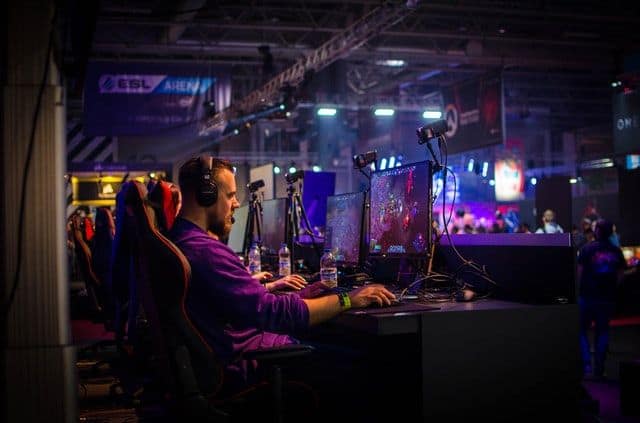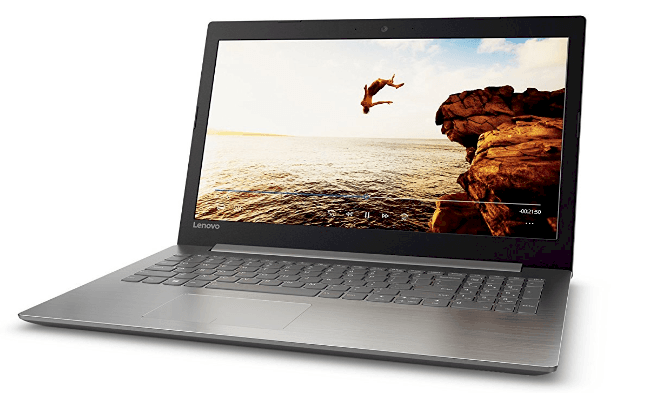Which CPU is Best for Gaming and Content Creation?

The CPU serves as the brain of the PC. As much as GPU and RAM are important, buying the right CPU will also contribute to fast and fluid performance, all while minimizing stutters and hindrances to a full extent.
So, now you ask yourself what CPU you need to buy?
A tried-and-tested Intel i9 processor perhaps?
Or maybe something heavy duty like an AMD Ryzen Threadripper?
What if you only need something within your budget?
Whatever your situation may be, we’re here to help you on your way to an awesome gaming experience and smooth content processing.
We’ll be talking in layman’s terms to keep things simple and easy to understand especially for first-time PC buyers.
What to Look Out for in a CPU?
It is important to note that a processor takes responsibility in putting everything in place; from the graphics to the consumption of RAM. Finding what’s best for gaming and/or creating content will depend on both your budget and the specs required.
We’re going to look at the common terms found in a processor and break them down briefly so you’ll have a better understanding on what’s going on with a CPU.
Cores
This is the most common word you’ll see when window-shopping for PC hardware. In summary, cores are where the main processing happens. Think of them as the chambers that connect to other hardware in order to boot up the works. Back in the day, a PC only needed a single-core CPU. Looking at today with all the modern games and specs-demanding software, multicore processors are the basic PC standards.
While gaming is mostly a single-core demand, you need to look for at least 4 cores in order to play modern games smoothly. This goes the same to multitasking on content creation for Youtube and live streaming. And of course, you only need 1 core if your sole purpose is to make memes and contribute to Reddit and/or 4chan.
But, if you manage to snag a CPU with more than 4 cores, the better.
Threads
Not to be confused with cores, threads are the virtual version of cores. If cores process hardware, then threads process software. When it comes to the quantity, you’ll usually find threads double more than cores which is natural. However, the number of threads used is equivalent to the number of cores…most of the time. In other words, if your PC is accumulating 4 cores, then it accumulates 4 threads too.
Just remember that threads are never lesser than cores. When you’re scrolling through CPUs, focus on the cores.
Although 4 to 6 threads is enough for gaming and content creation, high-profile Twitch streamers and experts recommend 7 or more threads when you’re going for high-budget live streams.
Clock Speed
Okay, so a lot of PC buyer beginners always find the clock speed numbers overwhelming to the point where they’re confused about whether or not to buy a CPU with a high clock speed. Now, I need you to read the following words carefully: clock speed numbers do not matter.
Yes, it’s the metric system for a CPU but in truth, it’s all just for formality’s sake. Even if you benchmark a game, clock speed won’t affect your game’s performance at all.
To this, we say ignore the clock speed numbers when buying the CPU of your choice. It doesn’t matter what the base clock and turbo/boost clock say.
So, why did we put this in the category for what to look out for in a CPU?
Just like only for the sake of metrics, we put it here for formality’s sake too – and a heads up for anything thinking clock speed numbers make a significant impact on gaming and streaming performance.
Overclocking
You’ve probably seen edgy PC users in comments sections and forums always talking about overclocking their CPUs to boost performance. Simply put it, overclocking means the ability of a CPU to go above and beyond its specs at the risk of higher voltage consumption and heat absorption.
Unless you know your way around technology from the back of your mind, you need to stay away from overclocking. Otherwise, if you do plan on making your processor go overboard, you need to back it up with both a power-saving AVR and a high-performance PC cooler. If you fail to meet those and you still pushed on with overclocking, don’t be surprised if your PC is hotter than a Childish Gambino soundtrack and your monthly electricity bill gets significantly higher.
Other Terms
PCIe Lanes
Also known as Peripheral Component Interconnect Express, PCIe lanes are nothing more than determining how many devices are attached on the motherboard. Some CPUs have 16 while others have as many as 64. But honestly, you don’t need to overthink this one. As long as the core and threads are at least 4, the PCIe lanes are on the safe spot anyway.
Cache/L3 Cache
The CPU cache reduces the time to access the data from the main memory. In other words, a cache takes responsibility in shortening data transfers between devices, contributing to the fast performance of a PC…but only slightly. Commonly, you’ll find an “L3” cache label when shopping for processors.
Honestly, just ignore the numbers. As long as it’s at least an L3 cache, you’re good to go.
TDP
Thermal Design Power. This term means how much heat the CPU generates. Also, it’s the same term for RAM and GPU. As long as you have a good cooler for your PC, you don’t need to worry about a thing here. Unless, you’re opting to overclock your CPU that is; which will increase the TDP beyond its record, putting your PC at high risk on overheating.
So, now that we covered the components, let’s look at the two most common processors in the market: Intel and AMD.
Intel vs AMD: Which One Should You Buy?
For a long time, Intel was always (and only, in some cases) the processor included in every PC. AMD was the closest second when it came to the processor race but they always released new ones in very slow rates until recently when they introduced the Ryzen series.
Now with improved specs and faster release dates, AMD quickly gained the support from PC enthusiasts thanks to its budget-friendly prices while simultaneously delivering a rich gaming and overall PC experience.
But, even with the ryzen popularity in the market (get it?), it still does not outperform Intel’s latest processors…for now, at least.
About Intel Processors
From then up to now, Intel constantly releases the best processors for both gaming and content creation. Whether your main agenda is to purely play your favorite video games, create 3D art, video editing or live streaming, Intel always provides the right processor just for you.
But, it goes without saying that Intel’s prices never come cheap. This is because what you pay is what you get; and what you get is high-quality performance.
If you’re looking for an Intel processor to meet with the demands of today’s games and software, you’ll need at least an Intel Core i5 8th generation. But, if you want something more well-balanced, an Intel Core i7 7th generation is just right. And, if you’re willing to dish out the big bucks, an Intel Core i9 9th generation is what you need to seek out for. But, the main catch here is that an i9 can cost as much as buying a PC with complete specs (which is a big yikes for a lot of people).
When it comes to single-core performance, you can always count on Intel.
No seriously, they’ve done this for years and it comes to show they know what they’re doing. But, as for multi-core functions, not so much; except for the Intel Core i9-7980XE.
Another thing we’d like to point out is that Intel processors are always ridiculed for its overclocking. Sure, you can overclock anytime but at the cost of your processor eating up energy faster than how Kirby can swallow Bowser whole. Also, instability has always been an issue when it comes to overclocking an Intel CPU.
In short, if you want a safe tried-and-tested smooth CPU performance without worrying about the budget, then Intel is always the way to go. But, if you’re planning to overclock, Intel isn’t right for you.
About AMD Processors
We’ll only look at the Ryzen series only since their previous releases are obsolete at this point. Now, about AMD CPUs, they’re more catered to the PC buyers with a tight budget. But thankfully, even at a reasonably mid-range price, the AMD Ryzen still delivers a great gaming experience. Sure, it may not be as classy and elegant as Intel but gritty gaming and decent content creation make AMD a people’s favorite.
And because of their newfound pacing of competence, they garnered multiple awards from well-known critics like Techspot, beating a huge collection of Intel products.
The AMD Ryzen also comes as a 2-in-1 package as both a GPU and CPU at the same time. That results in a more cost-efficient product for people looking for a gaming PC while on a budget. If you couldn’t decide which processor you want to partner up with an Nvidia graphics card, AMD Ryzen will tap on your shoulder and whisper in your ear, “Why not both?”
Fan favorites like the Ryzen 3 2200G and Ryzen 5 2600X are the choice for decent gaming experience. Sure, it may perform slower than Intel but it’s better than nothing…waaay better than nothing.
Oh, and you know what’s best about AMD Processors? Multi-core functions and overclocking. While it doesn’t deliver the same records as Intel, the AMD Ryzen series can, however, scale really well when going above and beyond their written specs.
Streamers and video editors will love the Ryzen 7 2700X thanks to its low-heat consumption while performing at a multicore rate.
This means you can overclock with a significantly lower risk than Intel even if you aren’t tech-savvy. The AMD Ryzen 5 2400G is the greatest example of this.
As for multicore processing, it beats Intel by a mile. If you lean more on the multitasking, content creation and live streaming side more than just gaming, the AMD Ryzen is perfect for you. In fact, you can say this is Ryzen’s strongest asset alongside overclocking.
While AMD Ryzen boasts inexpensive prices, that doesn’t mean they have no bigger products. For example, the AMD Ryzen Threadripper 2950x is perfect for both content creation and gaming. This also works best for CGI artists and video editors that deal with multiple apps at the same time. But, if you want to know what overkill means in a CPU, you should definitely check out the AMD Ryzen Threadripper 2990WX. If there’s a Final Boss in CPUs, it has to be the Threadripper 2990WX.
To summarize, AMD Ryzen may not have the same specs as Intel but if you prefer overclocking and/or performance that focuses on opening multiple apps at the same time without any jitter, this processor is right for you. Oh, and let’s not forget it’s still the budget-friendliest CPU in the market.
So Should You Get Intel or AMD?
In the end, it all really boils down to your own preference.
Either way, you don’t get a wrong answer.
Just take note, both CPU brands have ups and downs.
Intel is well-known for its stable performance without the need to overclock – making this a must-buy for gamers as long as it doesn’t involve an Intel i5 5th generation or below. While the brand is a joke for its Integrated Graphics line, Intel becomes no laughing matter when it comes to top-quality CPUs. It may not be good in the overclock department but its overall single core and multicore performance give good reasons why Intel costs a lot.
At the end of it all, the CPU pays for itself once you start booting up your games.
On the other hand, AMD Ryzen may not have the same stats as Intel in terms of overall performance but its cooler-friendly multicore functions, easy-streaming capabilities and low-cost prices make this a choice for the masses. If you’re the overclocking type, you’ll definitely get satisfied with how the Ryzen performs. If you need a good processor to keep up with your live streams, high-budget video editing and 3D art designs, the Ryzen is just for you.
In conclusion, both are good in their own ways.
Just make sure that the core and thread counts are at least 4 – which makes it ideal for decent gaming and overall content creation experience
Got anything to add?
Maybe thoughts on CPUs in today’s market?
Let us know in the comments!




